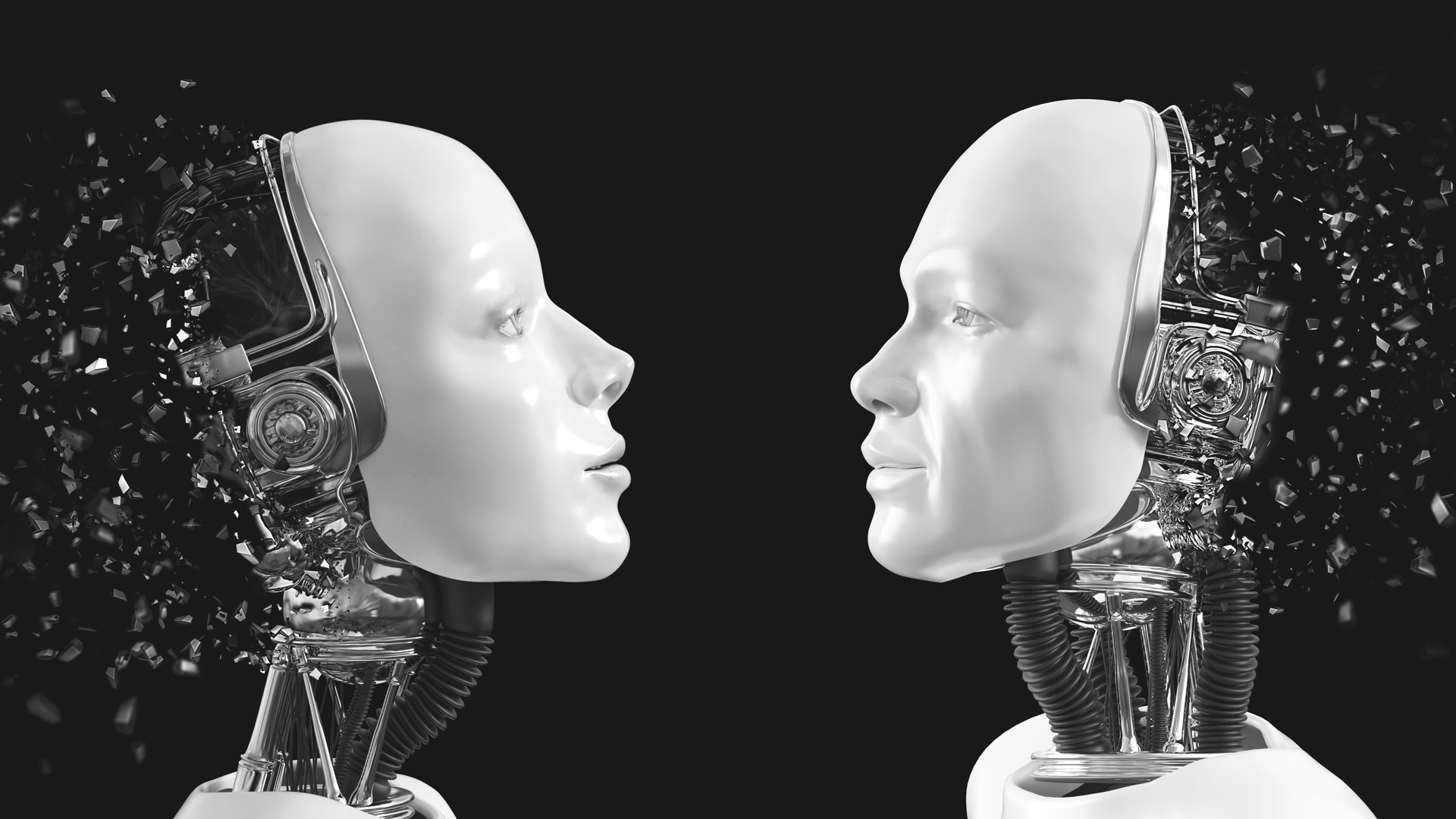H BO’s ‘Game of Thrones’ is renowned for it’s high budget, high intensity sequences that rival many major film releases in their scale and complexity. As an animator, and as someone who works with some very talented 3D artists, I was interested as to how some of these scenes were created. It turned out to be a very humbling experience. Below are some of the scenes I found to be the most impressive as to the methods that were taken to create the final effect.
For the two of you who have yet to watch Game of Thrones: Spoilers ahead.


Battle of the bastards (S06 EP 9)
Season 6’s penultimate episode ‘The Battle of the Bastards’ focused on Jon Snow’s siege of Winterfell, the safe return of his family and home, and his ambition to kill Ramsay Bolton from across a field with a stern look.
The lengthy sequence consisted of two massive armies of Archers, foot soldiers, and enough CGI horses to give a Dothraki strong feelings of inadequacy.
Aerial shots of the massive force were achieved through a combination of 3D rendered soldiers, and actors recorded on green screen so that their performances could be seamlessly composited into the scene. Many of the background elements were also created digitally, giving the designers endless flexibility in constructing the shots.
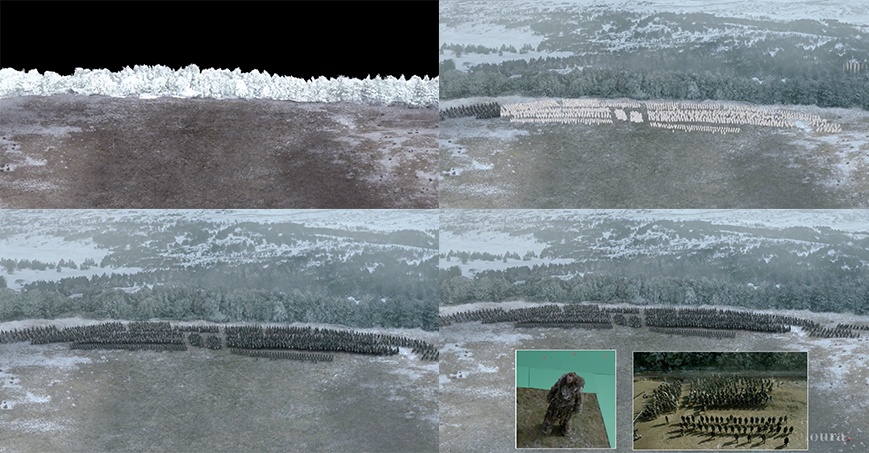
Given the moral grey area of charging real horses into a warzone, many CGI horses were created to simulate the exciting clashes between cavalry. As with many of the CGI elements in Game of Thrones, these creatures would have been first built in a 3D modelling program (Maya), painted and textured in a program such as Mari, and finally composited seamlessly into the scene using Nuke. In the chaos of battle these completely digital creations are indistinguishable from their real-life counterparts.
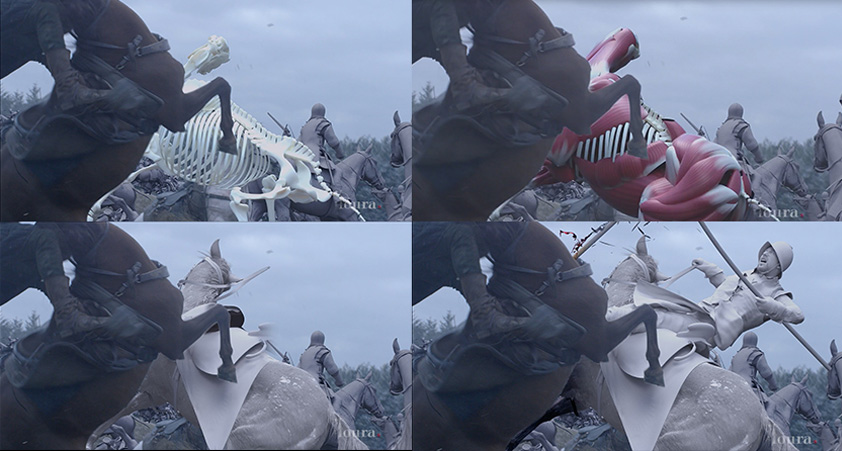
Take me to Church (S06 EP10)
Season 6’s finale was an explosive ending to an all round fantastic season. Queen Cersei’s plot to pluck a few flowers from the Tyrell family tree ended in a massive wild fire explosion, reducing the Sept of Baelor to smouldering rubble. The massive crowd that gathered outside of the Sept was created through a combination of onset actors, alongside digitally rendered stand-ins to fill out the crowd. As opposed to manually animating these figures, virtual reality technology was used to track the movements of a single actor which were then mapped onto the models. This approach allowed many movement variants to be created efficiently for all the CG characters in the crowd.
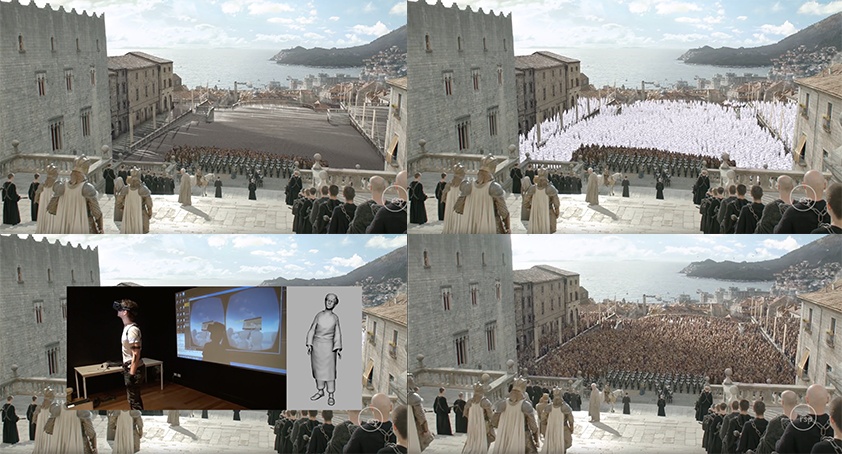
The wildfire fireworks display was created through a combination of 3D rendered structures, physics simulations to create the crumbling ruin and particle effects (Smoke, fire, dust). The Sept of Baelor model was then overlaid on top of existing footage of Kings Landing, filmed on location in Dubrovnik Croatia. Once all of these processes were applied, we are left with only Cersei’s smug grin, and Prince Tommen’s unexpected approach to descending tall structures.
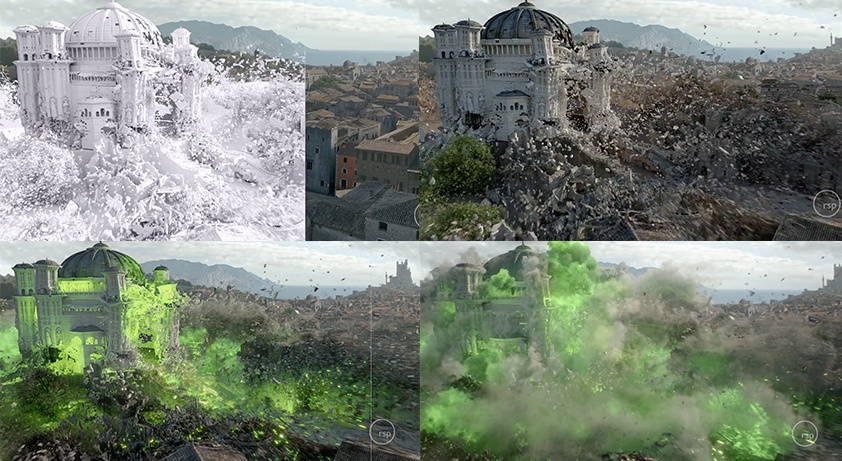
The Battle of Hardhome (S05 EP 8)
Set within the icy and desolate village of Hardhome beyond the wall, the battle of the same name was one of the more savage and horrifying encounters of the series. The cold, mountainous wildling camp beyond the wall was created within the Magheramorne Quarry in Northern Ireland, ironically the same location as Castle Black, the stronghold of the Nights Watch. 3D scans of the Icelandic landscape used for previous scenes beyond the Wall were composited into the shots to give the set a sense of place within the fiction. These additions stood comfortably next to the practical wildling village which was built within the quarry. Practical wind, smoke and snow effects batted the set and actors, and a cold blue colour palette added in post finalised the look.
The army of the dead comprised of onset actors in makeup and prosthetics, as well as computer generated stand-ins to perform some of the scenes more fatal actions. Undead Wight’s in the later stages of decomposition had green screen applications to various body parts so that they could be altered in post.
The 14-foot giant Wun Wun played by the ‘smaller’ 7ft 1 Ian Whyte, was at the centre of many of the scenes. With his performance filmed on green screen, his actions could then be composited into the scene via an on-location reference. In this case it was a ball on a stick, which finally explains the shows infamously high budget.
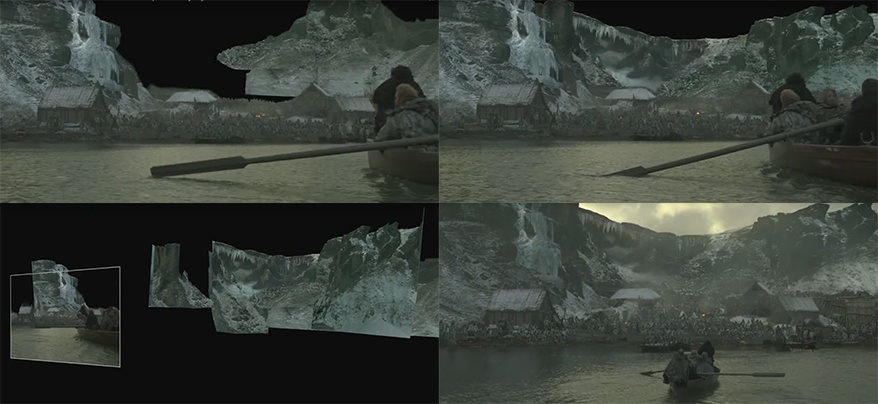
There are countless other scenes that showcase the skill and effort that goes into constructing the CGI of Game of Thrones, however I would like this blog to be shorter than one of George R.R. Martins novels. With a long wait until the 8th Season, we all have plenty of time to appreciate the amazing work behind HBO’s Game of Thrones.



